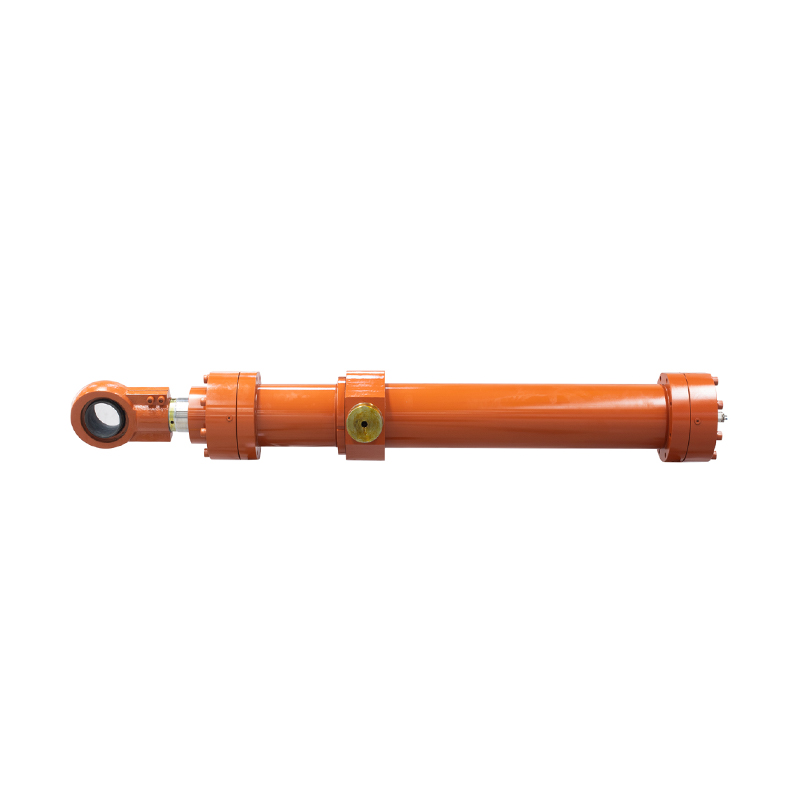In the realm of mechanical engineering, hydraulic cylinder is pivotal components that drive a broad spectrum of heavy-duty machinery. From construction equipment to industrial machines, these devices play a crucial role in enabling motion and power. But what exactly is a hydraulic cylinder, and why does it command such importance in modern engineering?
At its core, a hydraulic cylinder is a mechanical actuator that generates linear motion through the application of pressurized hydraulic fluid. The simplicity of this design belies the immense power it can unleash. By converting hydraulic energy into mechanical force, these cylinders are responsible for powering everything from bulldozers to cranes, facilitating movement with remarkable precision.
The Anatomy of a Hydraulic Cylinder
A hydraulic cylinder consists of a few key components: the cylinder barrel, piston, piston rod, seals, and end caps. The barrel serves as the casing that holds the hydraulic fluid, while the piston divides the interior into two chambers—one that is filled with hydraulic fluid and another that remains under pressure. The piston rod extends from the cylinder, connecting to the machinery it is designed to move.
The beauty of the hydraulic cylinder lies in its simplicity and versatility. When hydraulic fluid enters the cylinder, it pushes against the piston, creating a force that moves the piston rod. This straightforward mechanism allows for precise control over the motion, offering both speed and power that cannot be matched by mechanical systems alone.
How Hydraulic Cylinders Work
Hydraulic cylinders operate based on Pascal's Law, which states that pressure applied to a confined fluid is transmitted equally in all directions. In practice, this means that when hydraulic fluid is pumped into the cylinder, the pressure pushes the piston, resulting in motion. Depending on the design, hydraulic cylinders can function in single-acting or double-acting modes.
In single-acting cylinders, the hydraulic fluid only pushes the piston in one direction, with a spring or gravity returning it to its original position. On the other hand, double-acting cylinders allow fluid to flow into both sides of the piston, offering more control and versatility by enabling movement in both directions.

Applications Across Industries
The reach of hydraulic cylinders extends far beyond heavy machinery. They are integral in industries as diverse as aerospace, agriculture, automotive, and even renewable energy. In agriculture, for instance, hydraulic cylinders power the lifting mechanisms of plows and harvesters. In aerospace, they assist in aircraft landing gear systems, ensuring safe takeoffs and landings. Whether it’s a massive excavator or a high-tech wind turbine, hydraulic cylinders are indispensable for smooth, efficient operation.
Moreover, their ability to deliver consistent, high-force output with minimal wear and tear makes them a preferred choice in demanding applications. This is particularly evident in the automotive sector, where hydraulic systems are used in braking systems and lifts, providing a level of reliability and safety that is unmatched by alternative technologies.
Why Choose Hydraulic Cylinders?
There are several reasons why hydraulic cylinders are the go-to solution for power transmission in various mechanical systems. First and foremost, they offer unparalleled force output relative to their size. The power generated by a hydraulic cylinder is determined by the pressure of the hydraulic fluid and the surface area of the piston. This translates into an ability to move heavy loads with remarkable ease and efficiency.
Additionally, hydraulic cylinders are highly adaptable. They can be engineered to meet the specific demands of nearly any application, whether it's high-speed or high-force. Furthermore, the design can be tailored to meet specific space constraints, making them ideal for both compact machinery and larger equipment.
Hydraulic cylinders are more than just mechanical components; they are the unsung heroes of modern machinery. Their ability to generate powerful, controlled motion makes them indispensable across various industries, offering unmatched efficiency and precision. Whether lifting, pushing, or pulling, hydraulic cylinders ensure that machines operate smoothly and effectively. As technology advances, the role of hydraulic cylinders will only become more prominent, continuing to drive the efficiency and power of machinery across the globe.
We have a strong R&D team, and we can develop and produce products according to the drawings or...
We have two of our own casting foundries and one CNC machining factory. So we can offer the best price...
We have our own testing lab and the advanced and complete inspection equipment, which can...